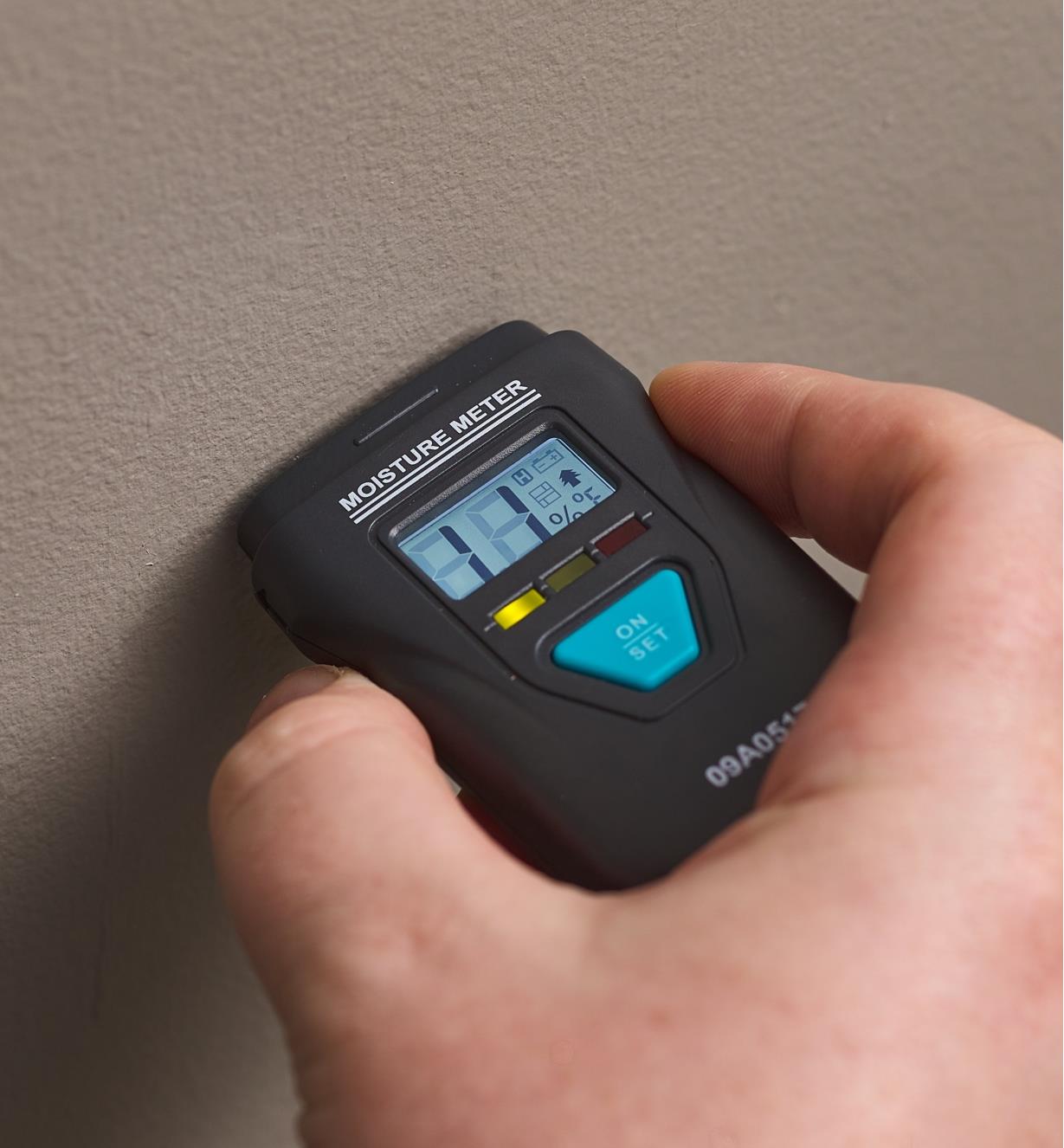Why Every Property Owner Demands a Moisture Meter: Key Benefits and Features
Why Every Property Owner Demands a Moisture Meter: Key Benefits and Features
Blog Article
Comprehending the Relevance of a Moisture Meter in Avoiding Mold and Water Damage in your house
In the realm of home upkeep, the visibility of moisture can often be a quiet yet powerful adversary, efficient in causing prevalent mold and mildew growth and insidious water damage if left unchecked. Among the peaceful setting of a residence, hidden dampness problems can brew underneath the surface area, posing a risk to both home and health and wellness. Geared up with the right devices and expertise, property owners can proactively deal with these possible hazards. Comprehending the relevance of a dampness meter in this fight is not just an option however a strategic requirement.
Value of Moisture Detection
Efficient moisture detection methods are vital for securing homes and avoiding possible mold development and water damages. Moisture can seep into numerous building materials, leading to architectural concerns and health threats. By utilizing a moisture meter, property proprietors can proactively recognize areas susceptible to excess wetness, permitting prompt treatment and reduction techniques.
Moisture meters provide exact readings of wetness degrees in various materials such as drywall, timber, and concrete. This information helps in determining locations of issue, also in hard-to-reach or concealed areas. Early detection of wetness build-up allows punctual repair services or modifications to prevent further damage.

Just How Moisture Meters Work
Dampness meters play a pivotal role in the aggressive identification of excess wetness, helping in the avoidance of prospective mold development and water damage by giving exact analyses of dampness levels in various building materials. These tools function based on various principles, depending on their kind. Moisture Meter. Pin-type moisture meters, as an example, have two pins that pass through the material to gauge the electrical resistance in between them. When wetness exists, it enhances the material's conductivity, bring about a lower resistance analysis. Pinless wetness meters, on the other hand, use electromagnetic sensing units to check the product without triggering damage. These sensing units release electro-magnetic signals that penetrate the product and measure the dielectric residential properties, indicating wetness web content. Some progressed moisture meters pin both integrate and pinless modern technologies for extensive moisture detection. Comprehending exactly how moisture meters feature is crucial for exact and prompt wetness level analyses, enabling reliable precautionary actions versus mold and water damage.
Finding Early Caution Indications
Upon preliminary examination of a residential or commercial property, identifying refined indications of excess dampness comes to be vital in the early discovery of potential mold development and water damages. Some typical very early indication include mildewy smells, water discolorations on ceilings or walls, peeling paint or wallpaper, and warped or stained surface areas. Moldy odors often indicate the existence of mold and mildew or mold, also if no noticeable signs are noticeable. Water stains can signify leaks or infiltration, while peeling off paint or wallpaper may be a result of wetness jeopardizing the bond of these materials to the surface area. Distorted or blemished surfaces, such as twisting floorboards or discolored drywall, are clear indicators of water damage. Furthermore, an increase in allergy signs or respiratory issues among owners might recommend the existence of mold and mildew because of excess moisture. By promptly recognizing and resolving these very early warning signs, house owners can alleviate the danger of substantial mold and mildew development and water damages in their homes.
Avoiding Mold And Mildew Development
Identifying early caution signs of excess moisture within a residential property not only makes it possible for prompt discovery of potential mold growth and water damage however additionally offers as an my site aggressive procedure in avoiding the spreading of mold and mildew. To efficiently stop mold and mildew growth, it is essential to resolve any kind of sources of wetness without delay.
In enhancement to resolving moisture sources, keeping interior humidity degrees listed below 60% can considerably inhibit mold growth. Proper ventilation, adequate insulation, and using air conditioning unit or followers can aid manage indoor moisture degrees. Checking wetness degrees in areas susceptible to dampness, such as cellars and creep areas, using browse around these guys a moisture meter can additionally help in very early detection of elevated wetness levels and potential mold growth. By taking aggressive steps to stop excess moisture and mold and mildew growth, house owners can secure their property and interior air quality.
Benefits of Normal Tracking
Routine monitoring of wetness degrees in a home can play a crucial role in preserving a healthy and balanced interior environment and avoiding prospective mold and mildew and water damage. By consistently checking moisture levels, property owners can spot any issues immediately and take necessary actions to avoid mold growth and water damages. One of the vital advantages of routine tracking is very early discovery. By identifying and resolving high wetness degrees early, house owners can interfere before mold has the possibility to spread out and develop. This aggressive method can save both time and money in the lengthy run by preventing substantial mold and mildew remediation and repair work expenses.
Moreover, normal monitoring enables property owners to track patterns and fads in wetness levels over time. Inevitably, the consistent tracking of dampness levels encourages property owners to shield their home, safeguard their health and wellness, and maintain the integrity of their indoor setting.

Conclusion

By making use of a wetness meter, residential or commercial property owners can proactively identify locations prone to excess wetness, permitting for prompt intervention and mitigation techniques.

Keeping an eye on moisture levels in areas susceptible to dampness, such as cellars and creep areas, utilizing a dampness meter can also help in very early discovery of raised dampness degrees and prospective mold and mildew growth. (Moisture Meter)
Report this page